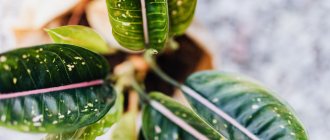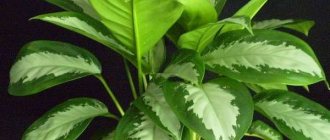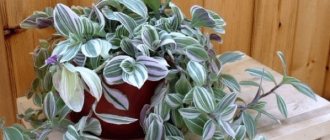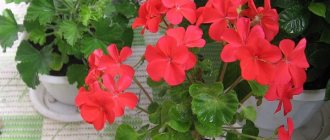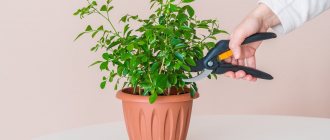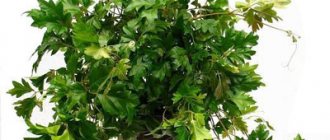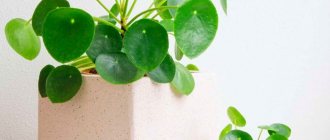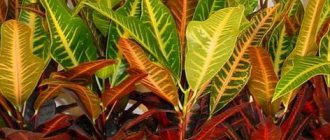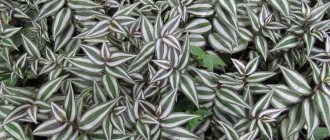We bring to your attention: aglaonema - varieties, names, photos. Bright, elegant and at the same time relatively unpretentious and easy to care for, aglaonema has deservedly soared to the top of the charts of indoor plant lovers.
The abundance of varieties and variety of leaf colors - from white to bright crimson and almost black, with a border, speckled, striped, tricolor - as well as the valuable ability to improve the air quality in the apartment, make aglaonema a magnificent green friend for every taste and all occasions life.
Aglaonema was initially brought to Russia from Dutch nurseries, where it came from Asia. Initially, it was possible to buy aglaonema mainly only with green leaves. In the last few years, Aglaonemas have been coming to us directly from nurseries in Southeast Asia, where they are extremely popular and amaze with the brightness of their colors.
The main Asian producing countries of variegated aglaonema varieties are Thailand and Indonesia. And the green variety, popular in China, which is known as Chineese evergreens, is often found in our country under the name Aglaonema Maria.
We show the variety of types and varieties of aglaonema with names and photos. The selection includes many Asian varieties from Thailand and Indonesia, plus classic old varieties.
Aglaonema - varieties with green leaves - Green, Green, Green
The first to appear on the Russian flower market were Aglaonem varieties with green leaves. They still remain popular, although compared to their colleagues with red and pink leaves they look more modest.
Maria / Maria Aglasha, with whom it all began for many. The discreet charm of a green leaf with a light pattern.
Aglaonema Maria
Silver Bay / Silver Bay
A classic of the genre among green varieties, it was also one of the first to become available in Russia.
Aglaonema Silver Bay
Silver Queen / Silver Queen, or Silver Queen
An ageless classic, expressive and bright, despite the green color of the leaves.
Aglaonema Silver Queen
Aglaonema Stripes / Stripes, or striped
An old variety with delicate light green stripes.
Aglaonema stripes
Freedman Friedman, aka Cecilia or Gabriel
The variety periodically appears under several names depending on the nursery producer, but the essence is the same: a light green leaf with a darker edge.
Aglaonema Freedman
Sundrop / Sun Drop, or Solar Drop
Aglaonema Sundrop
Tricolor / Tricolor The most expressive variety of the green classics is Aglaonema painted tricolor. Requires more attention than other green varieties. With a lack of light, the spots lose their severity.
Aglaonema Pictum Tricolor
Green Ball / Green Ball, or Green Ball Without much imagination, this variety was named for the round shape of its leaves, which is completely uncharacteristic of aglaonema, which is why it is the object of desire for aglash connoisseurs.
Aglaonema Green Ball
Flamingo / Flamingo
Leathery, dark green leaves with pinkish edges look stern.
Aglaonema Flamingo
Bamboo / Bamboo
A variety whose main advantage is its super-narrow leaves, which are quite rare in aglaonemas.
Aglaonema Bamboo
Full Moon / Full Moon, or Full Moon
Aglaonema Full Moon (Indonesia)
Happy Girl / Happy Girl, or Happy Girl
Aglaonema Happy Girl
Landing
Although aglaonema comes from the tropical forests of Asia, its cultivation is not particularly difficult. The plant grows successfully in apartments if suitable conditions are created.
Plant requirements for growing conditions
This unusual flower loves semi-shaded and bright places, but does not tolerate direct sunlight. Harsh sun will cause the attractive leaves to turn yellow instantly. Therefore, a large amount of light is only possible if it is diffused. Aglaonema acquires its full color in moderate lighting. It would be ideal for varieties whose leaves are painted in different colors, a south window, but behind tulle.
Strong shading harms the plant, then its leaves will lose their expressive color and begin to become smaller. You can place the pot a maximum of 2 meters from the north window. At a further distance from the light source, neither aglaonema nor any other plant will develop correctly.
Experts recommend adapting the location to a specific variety. It is better to be guided by the color of the leaves - the more colorful the leaves of the variety, the more light they need so that they can color beautifully.
Aglaonema loves warmth and hates drafts! Remember to protect plants from cold drafts in winter when ventilating the room.
The optimal growing temperature is 20-25 degrees Celsius; such conditions can be provided in an apartment. The air temperature should not fall below 15 °C. These flowers look great, for example, in a bathroom where there is a window, where they have the sufficient humidity they need. The temperature for aglaonema in winter should be slightly lower and be in the range of +18 + 22 degrees Celsius.
One of the main criteria for growing tropical plants at home is ensuring high air humidity. Care must be taken to ensure that the air humidity does not fall below 50% for an extended period of time.
A draft will greatly damage the plant and cause the leaves to quickly darken. If aglaonema was purchased and moved outside in cold weather, the leaves may be damaged. If alarming symptoms appear, you need to act quickly. Remove damaged parts and ensure sufficient temperature.
Soil requirements
When purchasing aglaonema in pots, you should check whether the substrate in the containers is suitable and, if necessary, replant the plant. It’s a good idea to immediately change the pot to a wide and shallow one after purchasing. Aglaonema roots grow widely and not very deeply, and it is from the shallow layers of the substrate that they draw water and nutrients.
The soil for growing aglaonema should be:
- fertile;
- humus;
- with a slightly acidic pH.
All-purpose soil mixed with sand in a 2:1 ratio is sufficient. A good potting mix can be made from a combination of good quality all-purpose soil, perlite and sand. You can throw a little expanded clay into a bag and break it with a hammer; this crushed expanded clay should be mixed with soil. We do the same when replanting a plant.
Aglaonema does not require starting fertilizer in the substrate. The soil in the pot should never be too wet or too dry, so the plant should be watered regularly but sparingly.
A light substrate is preferable for aglaonema. It grows well even without soil and belongs to the group of plants that are excellent for hydroponics.
Transfer
Aglaonema should be replanted every year, preferably in the spring. At the same time, propagation can be carried out by dividing the plant. Young and old aglaonemas need to be planted in a humus substrate. It is very important to create a good drainage layer at the bottom of the pot from small crushed stone, pebbles or expanded clay.
Replanting is done at such intervals as to give space to the roots. Usually every year you need to change the pot, choosing a larger size. The root system of the plant is quite shallow, so low containers, baskets or boxes can be used.
You need to inspect the roots after the plant is removed from the container. The roots may rot, so any black or dark segments should be cut off. This should not harm the plant.
Attention! Aglaonema is poisonous, so any replanting work should be done with gloves. The tissues of the plant contain highly toxic sap, which can cause skin irritation, allergies, and burns. Do not touch your mouth or eyes with a dirty hand, because mucous membranes are more sensitive to toxins than the skin. Due to its toxic properties, it is better not to grow the plant in apartments where children play or pets live.
Diseases and pests
Diseases of the indoor Aglaonema flower are associated with improper care of it at home. For example, when leaf blades turn yellow, you can tell that the soil is very wet. If a gray coating is observed on the leaves, the plant is affected by gray rot. To combat the disease, it is recommended to disinfect the root system with an insecticide and transplant the flower into a new substrate.
It is possible that aglaonema is damaged by pests such as spider mites, aphids, thrips, mealybugs, scale insects or whiteflies. To combat them, you need to try to remove pests from the plant, and then treat it with an insecticide or Actellik (15%).
How to propagate
There are several methods by which aglaonema is propagated at home.
Propagation by cuttings can be used after the stem of the aglaonema bush becomes noticeable. It is better to choose the spring-summer period. Technology:
- Cut the stem and divide it into several parts 9-10 cm long. You should pay attention to the fact that each part must have leaf blades.
- Sprinkle the cut areas with crushed charcoal and let it dry.
- The petioles are placed in the soil to a depth of 5-6 cm. To root the petioles, it is recommended to use a substrate consisting of peat, sand and turf.
- Cover the pot with cuttings with film, creating greenhouse conditions.
- The cover must be removed periodically to ventilate and moisten the soil. The room temperature should be between 22-25°. The rooting process takes 3-4 weeks.
- After the roots appear, the plant is transplanted into a substrate for adult flowers.
For propagation by seeds, fresh seed material that has ripened directly on the plant is used. When storing seeds, they lose their viability. They need to be removed from the pulp of the berries and washed under running water. They are sown in containers filled with a soil mixture of sand and peat. The soil in the container should be moist. The room temperature should be from 22 to 25°. Shoots appear quickly and amicably. After the first 2 leaves appear on the seedlings, they can be planted into the substrate for adult flowerpots.
The method of dividing the bush can be combined with replanting.
Kinds
Aglaonema includes a huge number of different species and varieties. Each has distinctive external features, care requirements and other features. Before purchasing, you need to study the characteristics to understand which variety is more suitable.
Changeable
The variety comes from the Philippines. Character traits:
- straight stems;
- maximum height 70 cm.
The leaves can be up to 30 cm long and up to 10 cm wide. They are slightly curved, the leaf blade is glossy and may have light waves. On average, up to 6 flowers are observed in one inflorescence. The fruits are red berries.
Mistakes and care problems
Caring for aglaonema at home is sometimes associated with some problems.
| Problem | Cause |
| The surface of the leaves wrinkles and their tips dry out | Low humidity, plant damage by insects |
| The leaves are curling | The room temperature has dropped sharply, the plant is in a draft |
| White spots appear on leaf blades | The plant was exposed to sunlight |
| The flower grows slowly | Cold or hard water is used for irrigation |
